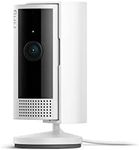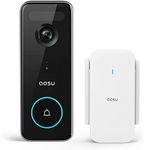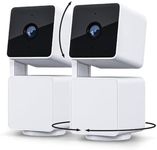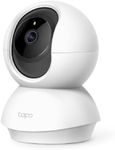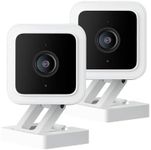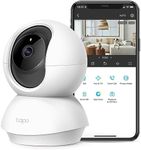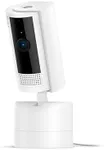Buying Guide for the Best Smart Camera For Google Home
Choosing a smart camera for your Google Home setup is all about finding a device that fits your home security needs and integrates smoothly with your existing smart home ecosystem. The right camera will help you keep an eye on your home, loved ones, or pets, and can offer peace of mind whether you're at home or away. To make the best choice, it's important to understand the key features and how they relate to your specific needs, such as where you want to place the camera, what you want to monitor, and how you plan to use the footage.Google Home CompatibilityThis refers to how well the camera works with Google Home and Google Assistant. A compatible camera can be controlled by voice commands, show live feeds on smart displays, and integrate with routines or automations. Some cameras offer deep integration, while others may only support basic features. If you want seamless control and easy access through your Google Home devices, make sure the camera is officially supported and offers the level of integration you need.
Video ResolutionVideo resolution determines how clear and detailed the footage from your camera will be. Common options include 720p (HD), 1080p (Full HD), and 2K or 4K (Ultra HD). Higher resolutions provide sharper images, which can be helpful for identifying faces or details, but they also use more storage and bandwidth. If you need to monitor large areas or want to zoom in on details, go for higher resolution. For basic monitoring in small spaces, 720p or 1080p is usually sufficient.
Field of ViewField of view (FOV) describes how wide an area the camera can see, measured in degrees. A wider FOV (like 130° or more) covers more space, which is useful for monitoring large rooms or outdoor areas. Narrower FOVs focus on specific spots, which can be good for entryways or targeted locations. Think about where you want to place the camera and whether you need to see a broad area or just a specific point.
Night VisionNight vision allows the camera to capture clear video in low light or complete darkness, usually using infrared LEDs. The quality and range of night vision can vary, with some cameras offering clear images up to 30 feet or more. If you need to monitor areas at night or in dim lighting, look for a camera with strong night vision capabilities. If the area is always well-lit, this may be less important.
Two-Way AudioTwo-way audio means the camera has both a microphone and a speaker, allowing you to listen and talk through the camera using your phone or smart display. This is useful for communicating with family, visitors, or even pets. If you want to interact with people or animals remotely, choose a camera with reliable two-way audio. If you only need to watch and not communicate, this feature may not be necessary.
Storage OptionsStorage options refer to how and where your camera saves video footage. Some cameras offer cloud storage, local storage (like microSD cards), or both. Cloud storage lets you access footage from anywhere but may require a subscription. Local storage keeps footage on the device, which can be more private but less accessible remotely. Consider how you want to access your recordings and whether you're comfortable with ongoing fees or prefer local control.
Power SourceSmart cameras can be powered by batteries, plugged into an outlet, or even use solar panels. Battery-powered cameras are easy to install and move but need regular recharging. Wired cameras offer continuous power but require access to an outlet. Think about where you want to place the camera and whether you have easy access to power, or if you need the flexibility of a battery-powered option.
Weather ResistanceIf you plan to use the camera outdoors, weather resistance is crucial. Look for cameras rated for outdoor use, which can withstand rain, dust, and temperature changes. Indoor cameras don't need this feature. Make sure to match the camera's durability to its intended location to ensure reliable performance.
Motion Detection and AlertsMotion detection allows the camera to sense movement and send you alerts. Some cameras offer advanced features like customizable zones or person detection, which help reduce false alarms. If you want to be notified only when something important happens, look for cameras with smart motion detection. If you just want basic monitoring, standard motion alerts may be enough.
